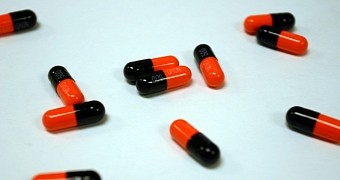Antibiotics or antibacterials are a type of medication that destroy or slow down the growth of bacteria. Since their discovery, antibiotics have been helping millions of patients worldwide recover from life-threatening infections and illnesses.
But often enough, the optimal dosage is not delivered to the exact area in need of assistance. A lot of antibiotics today are orally ingested, which is a good way to go about things when dealing with less serious infections.
But when it comes to more serious ones, medical personnel might have to turn to localized injections, which are both painful and aggravating to the overall mental condition of the patient.
However, these practices might be abandoned in the near future, thanks to the advances of 3D printing. The Orthopaedic Innovation Center from Winnipeg, Manitoba, Canada has found a possible solution to painlessly administer antibiotics directly on target and without pain.
For the time being, the company has applied for a patent which details a process in which antimicrobial articles to be used in implants are produced using additive manufacturing techniques.
But what really stands out in the patent is the part where the company wants to 3D print implantable objects, which are to be filled with antibiotics in the 3D printing process.
The patent details several techniques of how this end might be achieved, two of them including FDM and SLS technologies.
In the FDM (fused deposition modeling) scenario, antibiotics could be mixed with PLA and PCL polymer pallets during the actual process of manufacturing filament for the FDM 3D printer.
PLA and PCL will be used due to their resorbable properties, meaning that over time they will be broken down by the human body.
This process would allow antibiotics treatment to be especially tailored for the patient in question. Medical professionals will be able to judge the correct quantity of medicine based on body weight and the severity of the illness/infection.
The second method outlined in the patent describes how as ordinary PLA and PCL filament is melted and extruded from the print nozzle, antimicrobial powder or liquid could be infused into the plastic.
The patent also talks about the infusion of bone growth material within prints, with or without antibiotics being present.
For now 3D-printed antibiotics implants are just teased as a possibility in the patent, and we have no idea of knowing when they might arrive in hospitals and medical facilities.
However, at the pace at which 3D printing breakthroughs happen in medical research, it shouldn't be long.

 14 DAY TRIAL //
14 DAY TRIAL //